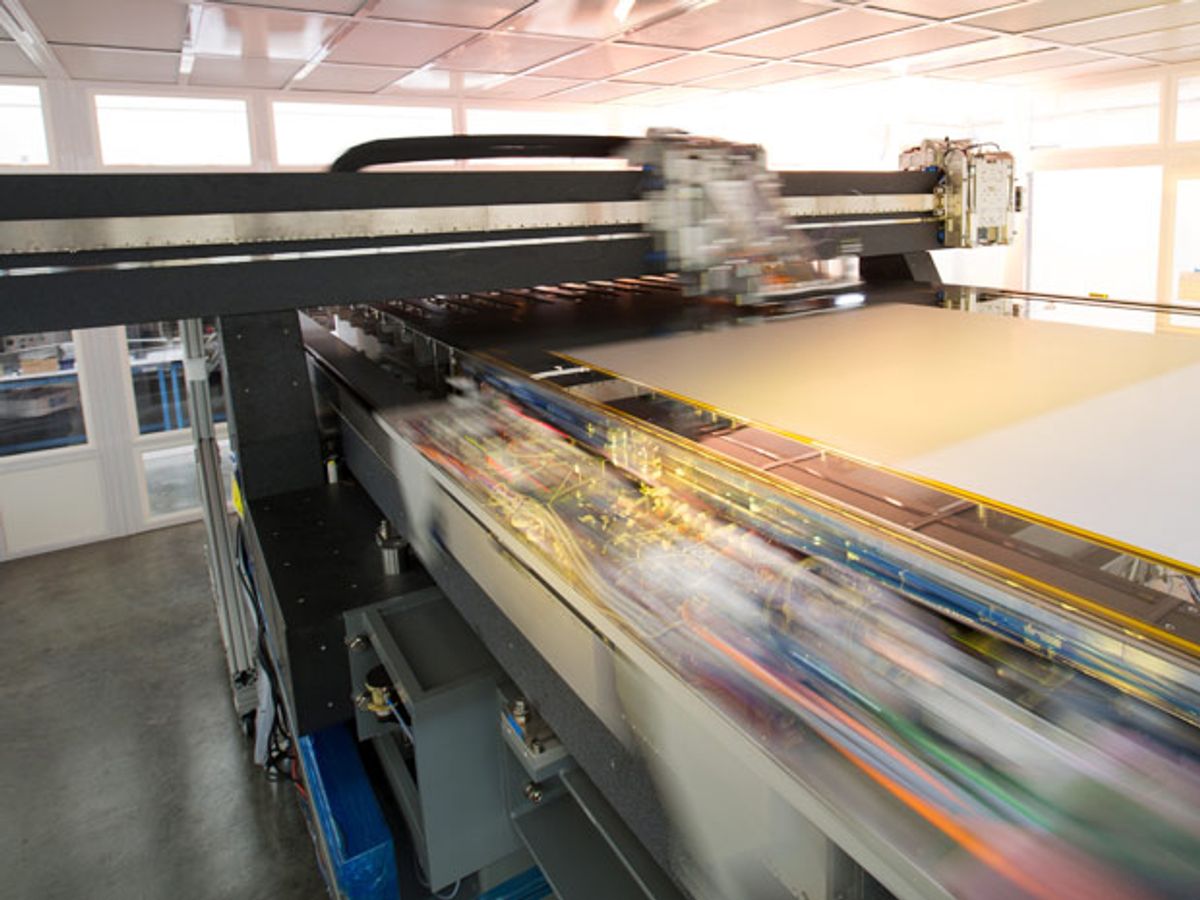Let’s talk OLEDs. The news this week is that OLED startup Kateeva, based in Menlo Park near Facebook’s campus, just collected another $38 million in funding, a chunk of that from Samsung.
Why is this interesting? After all, Kateeva’s been around since 2008 when it spun out of MIT; it already had about $70 million; and OLED has been the unrealized next big thing in large display technology for far too long. But there does seem to be something significant in this announcement. Or maybe I’m just desperately looking for a sign that OLED (Organic Light Emitting Diode) technology is really a competitor for large screens, because I’m tired of silly tweaks to regular LCD technology. (Enough with the curved screen already.)
First, a little background. Making an OLED display requires somehow placing the light-emitting (OLED means organic light-emitting diode) materials on a substrate in precise patterns of red, green, and blue pixels; a fuzzy pattern means a fuzzy picture. Today’s OLED display manufacturers use shadow masks and vapor deposition create the patterns, typically on glass. That wastes the material that hits the mask. It also limits the screen sizes: Large shadow masks are not physically stable enough to reliably produce defect-free pixels, and trying to use a small mask to make a big screen by repeatedly moving it adds yield-killing contaminating particles. That’s why the large-screen OLED TVs on the market today are so crazily expensive—the yields are lousy and the wasted ink is expensive.
A lot of people have thought for years that ink-jet printing would be a much better approach, but they’ve had problems getting it to work reliably, thanks to too many particle-caused defects and uneven printing (like what you might see on your inkjet printer at home when the cartridge starts to run dry). They’ve also had problems with the operating lifetimes of displays made this way compared with those made using the more typical vapor deposition process. Still, there’s been a race on to make a truly practical ink-jet printer for OLEDs. Merck and Epson have been working on it; as has Dupont. As has Kateeva. The winner could own manufacturing for the next generation of TVs.
Kateeva says it’s got it figured out and will be ready to ship manufacturing equipment, at least for the smaller displays that go in mobile devices, by the end of the year; with large-screen manufacturing systems to follow. The company says that part of making it work is its decision to surround the printers with nitrogen, which improves display lifetimes. It also indicated that it made a number of tweaks designed to reduce particle defects, including shielding parts that tend to generate particles, using filtering systems, and developing its own process monitoring and printing algorithms to eliminate printing unevenness.
OK, so here’s what else is interesting. This announcement isn’t coming from a TV manufacturer unveiling an amazing “price and ship date to be determined later” technology at CES; this is a manufacturing equipment company. That makes (relatively) cheap, large-screen OLED sound very real.
And Kateeva, even with Samsung’s investment, isn’t tied to any one TV manufacturer—it will sell its equipment to anybody, so if the process works, once it gets going we might start really seeing cheap OLED TVs, because the competition will be on.
The announcement also is a reminder of Samsung’s growing presence in venture capital and the world of startups. Back in 2013, Samsung created the $1 billion Ventures America Fund and a $100 million Catalyst Fund and set up what it calls a Strategy and Innovation Center on Sand Hill Road, the prime Silicon Valley address for venture investors. When the Ventures America Fund was first introduced, the company said the money would be going into components and subsystems, not content and services. But Samsung isn’t ignoring software, last year it also set up a software startup incubator, the Samsung Accelerator, in the former Varsity Theater on Palo Alto’s University Ave., and plans to turn part of the building into a “working cafe” that’s open to the public. (It's a smart way to troll for startups at the early early pre-garage stage.)
Finally, this latest evidence of Kateeva’s success is one more sign that Silicon Valley’s energies may be focusing back on hardware. Author Mike Malone recently predicted that Silicon Valley is about to face a technical shift from software back to hardware; he can put this one down on his “evidence” list.
Tekla S. Perry is a senior editor at IEEE Spectrum. Based in Palo Alto, Calif., she's been covering the people, companies, and technology that make Silicon Valley a special place for more than 40 years. An IEEE member, she holds a bachelor's degree in journalism from Michigan State University.




